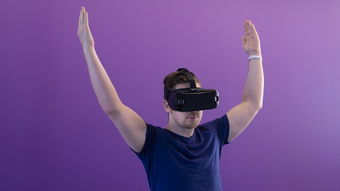In the rapidly evolving landscape of technology, Virtual Reality (VR) stands out as a transformative force that has the potential to redefine the way we interact with the digital world. VR technology, which immerses users in a simulated environment, offers a plethora of advantages that span across various sectors, including entertainment, education, healthcare, and beyond. This essay delves into the key benefits of VR technology and how it is shaping the future of human experience.
Enhanced Learning and Training
One of the most significant advantages of VR technology is its ability to create immersive learning experiences. By simulating real-world scenarios, VR can provide learners with a hands-on approach to education that is both engaging and effective. For instance, medical students can practice surgeries in a virtual environment without risk, while pilots can train in flight simulators that mimic real-life conditions. This not only enhances the learning process but also reduces costs and potential hazards associated with traditional training methods.
Therapeutic Applications
VR has shown promise in the field of healthcare, particularly in the treatment of psychological disorders. It can be used to expose patients to controlled environments that trigger anxiety or phobias, allowing therapists to guide them through the process of overcoming their fears. Additionally, VR can be a tool for pain management, distraction therapy, and rehabilitation, offering patients a non-invasive and often more enjoyable alternative to traditional treatments.
Entertainment and Gaming
The entertainment industry has been one of the early adopters of VR technology. Virtual reality gaming offers an unparalleled level of immersion, allowing players to step into the shoes of their favorite characters and interact with game worlds in a way that was previously impossible. This not only enhances the gaming experience but also opens up new avenues for storytelling and interaction, pushing the boundaries of what is possible in the realm of entertainment.
Remote Work and Collaboration
With the rise of remote work, VR technology has the potential to revolutionize the way we collaborate. Virtual reality meetings can provide a sense of presence that is often lacking in traditional video conferencing, making communication more natural and effective. This can lead to increased productivity and a more connected workforce, even when team members are geographically dispersed.
Accessibility and Inclusivity
VR technology has the power to make experiences more accessible to people with disabilities. By adapting virtual environments to accommodate different needs, VR can open up new opportunities for individuals who might otherwise be excluded from certain activities. For example, individuals with mobility issues can explore virtual worlds without physical limitations, while those with visual impairments can experience enhanced sensory feedback.
Design and Architecture

In the fields of design and architecture, VR allows for the creation of virtual prototypes and models that can be explored and modified in real-time. This not only speeds up the design process but also reduces the need for physical prototypes, saving both time and resources. Architects and designers can also use VR to present their concepts to clients in a more engaging and interactive way, leading to better communication and understanding.
Environmental and Safety Training
VR can be used to simulate hazardous environments or situations, providing a safe space for training and education. This is particularly useful in industries such as construction, where workers can learn to handle dangerous equipment or respond to emergencies without the risk of injury. By practicing in a virtual setting, individuals can develop the skills and confidence needed to handle real-life situations effectively.
Travel and Tourism
The travel and tourism industry has also begun to explore the potential of VR technology. Virtual tours allow people to explore destinations from the comfort of their own homes, offering a preview of what to expect and potentially influencing travel decisions. This can be especially beneficial for those who are unable to travel due to physical limitations or financial constraints.
In conclusion, the advantages of VR technology are vast and multifaceted, impacting a wide range of industries and aspects of daily life. From enhancing learning and training to providing therapeutic benefits and improving accessibility, VR has the potential to transform the way we interact with the world around us. As the technology continues to advance, we can expect even more innovative applications and a further expansion of its benefits, making VR an exciting frontier in the ongoing evolution of human experience.









